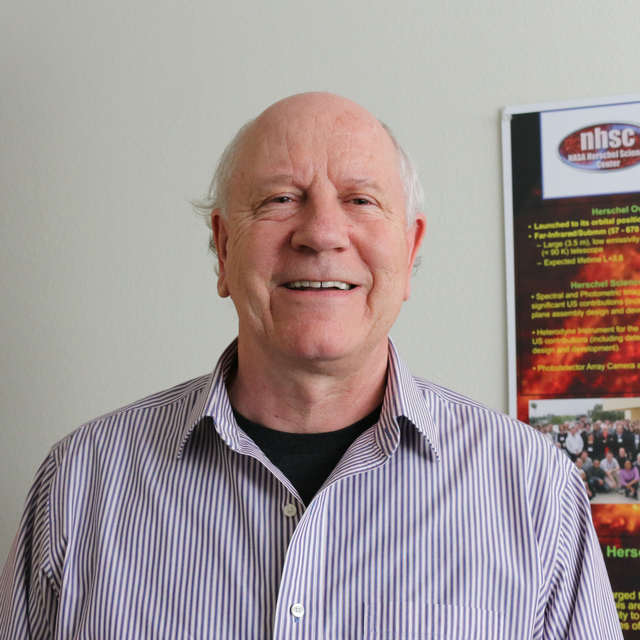March
2018
•
2018ApJ...855..141P
Authors
•
Peterson, B. W.
•
Appleton, P. N.
•
Bitsakis, T.
•
Guillard, P.
•
Alatalo, K.
•
Boulanger, F.
•
Cluver, M.
•
Duc, P. -A.
•
Falgarone, E.
•
Gallagher, S.
•
Gao, Y.
•
Helou, G.
•
Jarrett, T. H.
•
Joshi, B.
•
Lisenfeld, U.
•
Lu, N.
•
Ogle, P.
•
Pineau des Forêts, G.
•
van der Werf, P.
•
Xu, C. K.
Abstract
•
Using the PACS and SPIRE spectrometers on board Herschel, we obtained observations of the Taffy galaxies (UGC 12914/12915) and bridge. The Taffy system is believed to be the result of a face-on collision between two gas-rich galaxies, in which the stellar disks passed through each other, but the gas was dispersed into a massive H I and molecular bridge between them. Emission is detected and mapped in both galaxies and the bridge in the [C II]157.7 μm and [O I]63.2 μm fine-structure lines. Additionally, SPIRE FTS spectroscopy detects the [C I] {}3{{{P}}}2\to {}3{{{P}}}1(809.3 {GHz}) and [C I] {}3{{{P}}}1\to 3{{{P}}}0(492.2 {GHz}) neutral carbon lines, and weakly detects high-J CO transitions in the bridge. These results indicate that the bridge is composed of a warm multi-phase medium consistent with shock and turbulent heating. Despite low star formation rates in the bridge, the [C II] emission appears to be enhanced, reaching [C II]/FIR ratios of 3.3% in parts of the bridge. Both the [C II] and [O I] lines show broad intrinsic multi-component profiles, similar to those seen in previous CO (1-0) and H I observations. The [C II] emission shares similar line profiles with both the double-peaked H I profiles and shares a high-velocity component with single-peaked CO profiles in the bridge, suggesting that the [C II] emission originates in both the neutral and molecular phases. We show that it is feasible that a combination of turbulently heated H2 and high column-density H I, resulting from the galaxy collision, is responsible for the enhanced [C II] emission.
Links




